AC / DC Charging
The most important thing for each vehicle is its propulsion and fuel. Electric cars are propelled by the electric current, so most questions are raised by its method of charging. There are many myths and ambiguities in this area, which we will clarify in this article. We will focus on: what types of charging stations are there? What is the difference between them? And how fast does an electric car get charged?
Electric currents
First, a little necessary theory. The electric current can come in two forms:
- Alternating Current (AC)
- Direct Current (DC)
Alternating current (AC) is transmitted via power lines, and there is 230V and 50 Hz in a standard electrical outlet in most parts of Europe. Electric current is produced as alternating and it can be transmitted without much loss and over longer distances then it would be the case with the direct current.
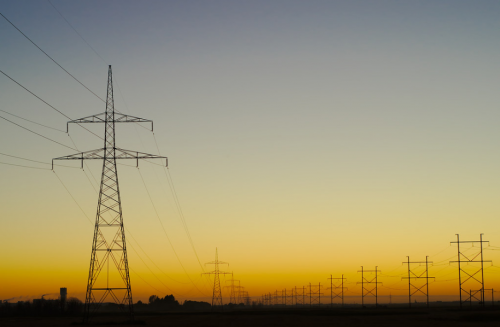
Power Lines. Author: Bruce Guenter (Licence CC BY 2.0)
However, most modern electronics are built on integrated circuits and batteries, which need direct current (DC) for their operation. Energy is stored in batteries using chemical energy, which takes place only in one direction.
Therefore, a battery-dependent device can only be charged using a charger that converts AC power from a electrical outlet to DC power. A typical example of such a device that converts AC current to DC is a laptop charger or a mobile phone charger. And the same system is needed for an electrical car.
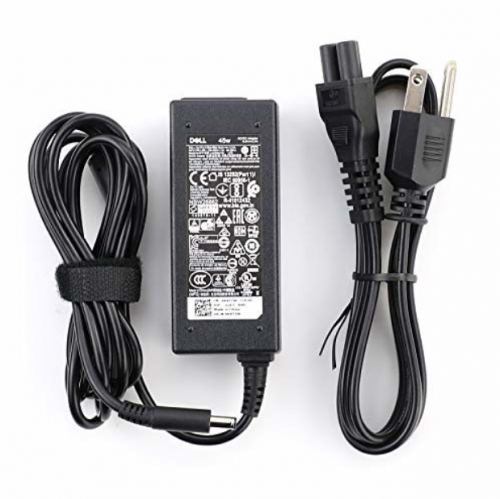
A Charger. Author: Kelley Ford. (Licence CC0 1.0)
AC charging
When charging an electric car with alternating current, the car's on-board system (also called the on-board charger) is used and it takes care of the conversion of outlet current into battery current. It therefore receives alternating current (AC) and converts it into direct current (DC), which is then sent to the car battery.
The key parameter when choosing an electric car is the capacity of this on-board (built-in) charger, because the car's charging speed depends on how fast this on-board system can receive the alternating current from the source and also on how many phases it is able to use.
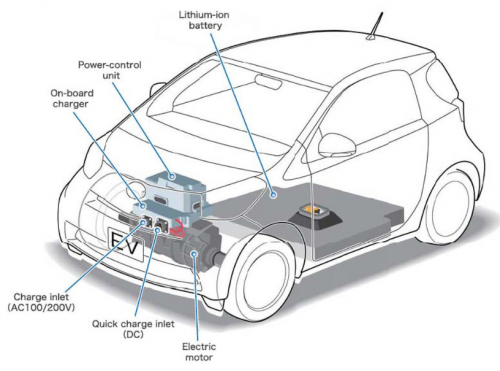
AC charging station
When charging with AC stations, the electrical grid is connected to the on-board charger.
The main function of the AC station is to mediate the necessary communication with the vehicle control system and to ensure the safety of the vehicle and the crew. Moreover, the charger tells the vehicle what maximum current it can draw at that time, depending on how busy the grid is. The AC charging station thus regulates the charging according to the current possibilities of the house or the charging point, so that the network is not overloaded.
The main advantage of AC stations is that they are affordable. They are 7x-10x cheaper than DC charging stations with the same performance. Their other advantage is that they are much more widespread due to their lower price. At the same time, they are significantly smaller and their installation is simpler, faster and less expensive. Thanks to their characteristics, AC charging stations are also suitable for home installation and night charging.

EVECUBE B+ AC home charging station. Author: EVEXPERT
Public charging stations, their location and a list of apps that will help you to find them, can be found here.
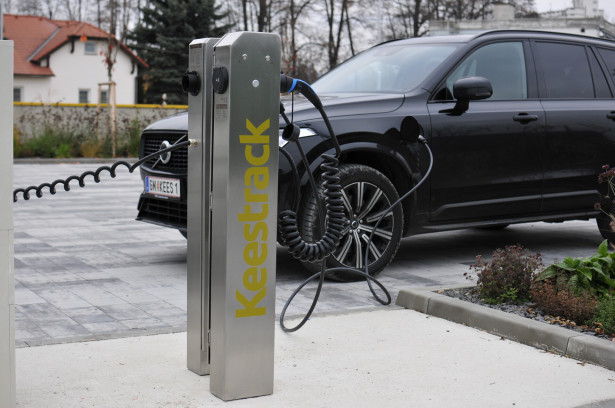
EVECUBE AC charging station. Author: EVEXPERT
The disadvantage of AC charging stations is that they are slower. However, the technology is still improving and today AC charging station can provide up to 22 kWh of charging power. If the battery of the electric car has a capacity of 21 kWh, it can be fully charged in about an hour.
However, if the electric car is equipped with only a 3.7 kWh on-board charger, then this means that the on-board charger is not able to take more than 3.7 kW per hour. If you really need to charge at a higher speed, there is nothing left but to charge using a DC charging station.
DC charging
DC charging, or so-called fast charging, is done using a DC charging station, which can change the alternating current (AC) to direct current (DC), it then "bypasses" the on-board charger of the electric car and sends this direct current via Battery Management System (BMS) to the battery, as instructed by the vehicle's charging control system.
Charging is therefore not limited by the power of the on-board charger and so it can be much faster.
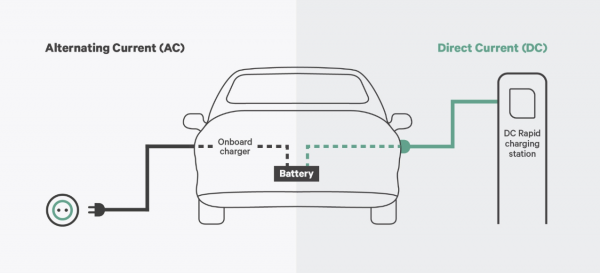
AC charging vs DC charging. Source: https://wallbox.com/en_nl/faqs-difference-ac-dc
DC charging station
A DC charging station is technologically much more complex and many times more expensive than an AC charging station and moreover it requires a powerful source. In addition, a DC charging station must be able to communicate with the car instead of the on-board charger in order to be able to adjust the output power parameters according to the condition and capability of the battery.
Mainly due to the price and technological complexity, we can count significantly fewer DC stations than AC stations. Currently there are hundreds of them and they are located on the main arteries.
The standard power of a DC charging station is 50kW, i.e. more than twice that of an AC station. Ultra-fast charging stations have power of up to 150 kW, and Tesla has developed super-ultra-mega-fast charging stations with an output of 250 kW.

Tesla charging stations. Author: Open Grid Scheduler (Licence CC0 1.0)
However, slow charging using AC stations is gentler for batteries and it helps their longevity, so the ideal strategy is to charge via the AC station at home and use DC stations only on long journeys.
Summary
Due to the fact that we have two types of current (AC and DC), there are also two strategies when charging an electric car.
It is possible to use an AC charging station where the on-board charger takes care of the conversion. This option is slower, but cheaper and gentler. AC chargers have an output of up to 22 kW and the time required for a full charge then depends only on the output of the on-board charger.
It is also possible to use DC stations, where charging is more expensive, but it will take place within a few minutes. Usually, their output is 50 kW, but it is expected to increase in the future. The power of rapid chargers is 150 kW. Both of them are located around the main routes and should be used for longer journeys only.
To make the situation a little more complicated, there are different types of charging connectors, an overview of which we present here. However, the situation is evolving and international standards and adapters are emerging, so in the future, it will not be a much bigger problem than different types of sockets in the world.
